

 FACULTATIVO ESPECIALISTA CIR. ORTOPÉDICA Y TRAUMATOLOGÍATraumatología y Cirugía OrtopédicaCentro Médico Teknonen/health-centers/centro-medico-teknon
FACULTATIVO ESPECIALISTA CIR. ORTOPÉDICA Y TRAUMATOLOGÍATraumatología y Cirugía OrtopédicaCentro Médico Teknonen/health-centers/centro-medico-teknon
Indications for endoscopic decompression
In cases of narrow canals (central spinal canal stenosis), bone and/or soft tissues such as the yellow ligament may compress the spinal cord to a point where nerves are unable to transmit signals to the lower extremities.
Typical symptoms of this pathology usually appear after walking short distances (50 – 150 meters) in the form of intense pain in one or both legs. This pain is known as intermittent claudication , also known as "vascular claudication". To relieve pain in the legs, patients usually sit or lean forward by flexing their back.
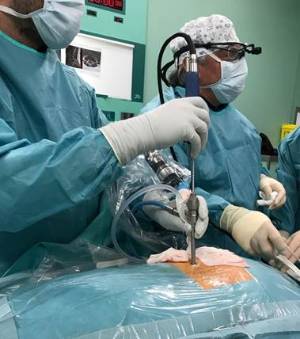
the endoscope and endoscopic cannula. Drilling is performed under
direct visual inspection using the camerabuilt into the endoscope with water irrigation.
Endoscopic decompression by interlaminar route allows an immediate recovery and discharge the day after the intervention. This surgery is indicated in cases of neurogenic claudication due to central stenosis of the lumbar canal and sciatic pain due to unilateral compression of the intervertebral recess.
The pain usually subsides in less than 24 hours after endoscopic decompression.
Clinical Case – Endoscopic decompression of a 76 years old patient
This 76-years old female had been suffering from chronic pain radiating into her right leg for the past 2 years and had been getting worse in the last 2 months, up to a point were the pain was unbearable. The patient was suffering from central canal stenosis at level L4/l5.
She underwent an endoscopic decompression in our center in the morning, 4 hours after surgery the patient was already walking and was discharged from the hospital in the same evening. In this video you can see the patient walking a few hours after surgery. This is a true out-patient spine surgery that does not require the patient to spend even one night in the hospital!
Endoscopic Decompression Advantages
"Spinal decompression is a classical surgical technique used in cases of central spinal stenosis. The spinal canal (bone and soft tissue like i.e. ligaments) is decompressed to release the spinal cord and nerves that are being compressed by hypertrophic (over-grown) bone structures or soft tissues, such as the yellow ligament, cysts, etc. However, classic open decompression or microscopic decompression techniques usually are quite invasive as they require an extensive removal of bone and soft tissues, which can result in an instability of the operated level. Plenty of bleeding of the removed structures can difficult the surgeon visualizing the surgical field which can result in injuries of nerves."
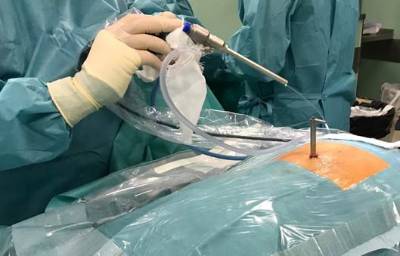
The endoscope is in Dr. Morgenstern’s hand (left). Note the minimal incision in
the skin of less than 1 cm in length and the absence of bleeding from the wound.
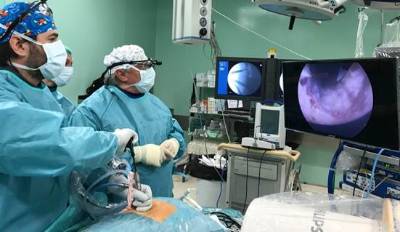
using live video visualizaton as displayed on a high definition monitor.
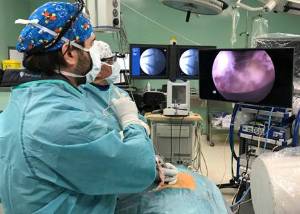
Image showing Dr. Morgentern (left) performing an endoscopic decompression with direct video visualization of the lumbar spine structures.
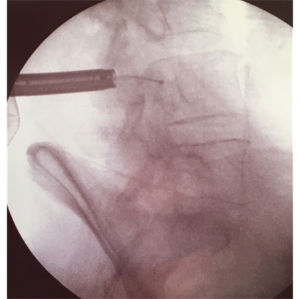
Intra-operative X-ray image showing the endoscopic cannula (left) out of which a radiofrequency electrode runs out (small ball at the tip) across the spinal canal. This proves that the spinal canal has been decompressed and the the release of the dura.
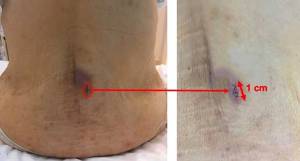
Postoperative images of a skin wound with a length of just 1 cm (red arrow). A small hematoma (blue in color) can be seen around the wound, which usually disappears within a few days after surgery.



































